After 17 years of blogging, hundreds of videos, and almost four decades of listening to frustrated homeowners, I can tell you this:
Proper kitchen ventilation isn’t optional; it’s essential.
This guide will show you how to vent every type of stove, avoid common mistakes (and Pinterest disasters), and literally breathe easier in your new kitchen.
For more in-depth insights, be sure to check out our Ventilation Buying Guide.
Let’s get started.
The Ultimate Guide to Proper Kitchen Ventilation
Why Most Kitchen Vents Fail
Pro ranges were first designed in the late 1980s to emulate commercial stoves.
Restaurants always have proper venting with adequate CFM, capture area, and ducting.
They even have fire-suppression systems in case a fire breaks out in the cooking area.

Yet when we look at the residential version, which has similar output and more insulation, the venting is haphazard and often wrong.
In the case below, you have no vent, so roughly 120,000 BTUs of smoke, grease, and compounds are emitted into the kitchen.

That’s not healthy, as you will see.
Why You Should Buy the Right Vent for Your Kitchen Stovetop
The Environmental Protection Agency warns that “studies of human exposure to air pollutants indicate that indoor levels of pollutants may be two to five times, and occasionally more than 100 times, higher than outdoor levels.”
In other words, I might be better off eating my lunch next to my office on the Expressway than preparing it without a vent (well, maybe not).
1. Your Efficient New Home in 2025
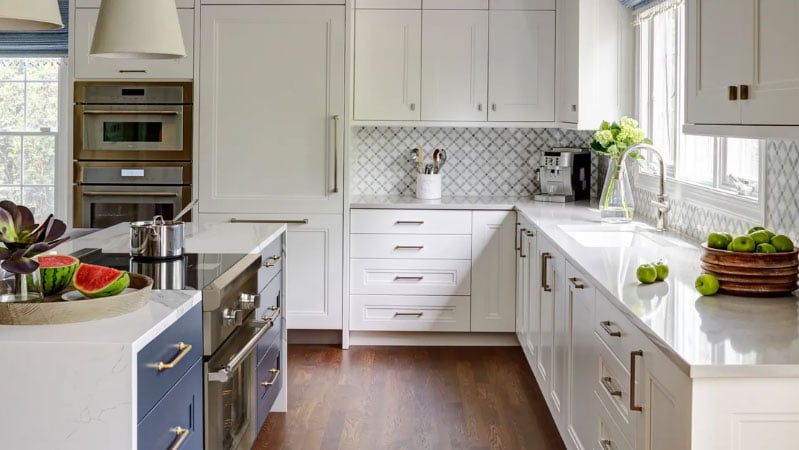
LEED certifications, ventless appliances, improved windows, and certain materials can trap pollutants in your home for extended periods.
2. Average Output of a Gas Range (1970s to Present)
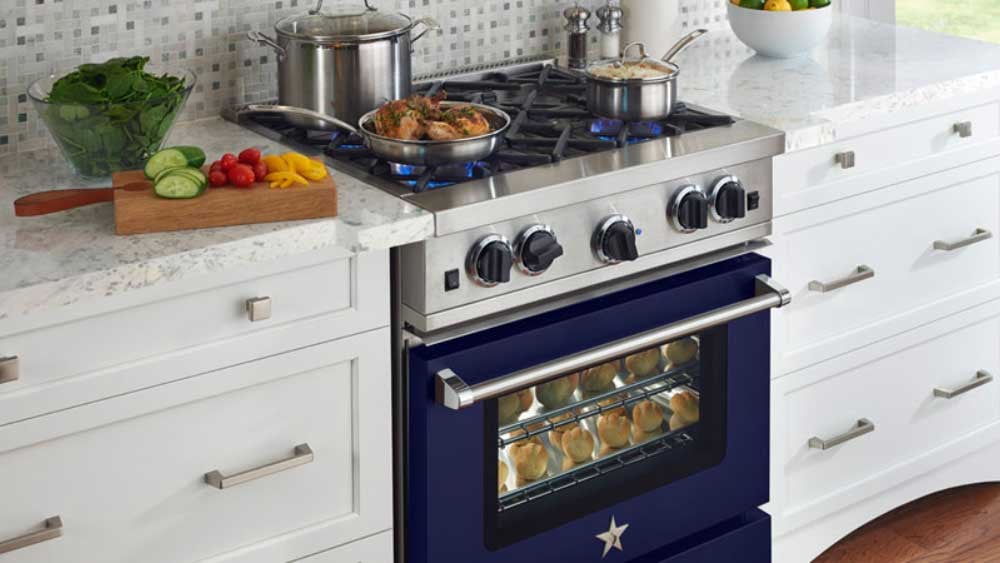
When I started at Yale in 1986, the average range produced about 37,000 BTU.
Today, it’s 60,000 BTU, and the BlueStar range shown above reaches 80,000 BTU.
My mom’s range was about 28,000 BTU, and I can’t remember her using the vent above that second oven.
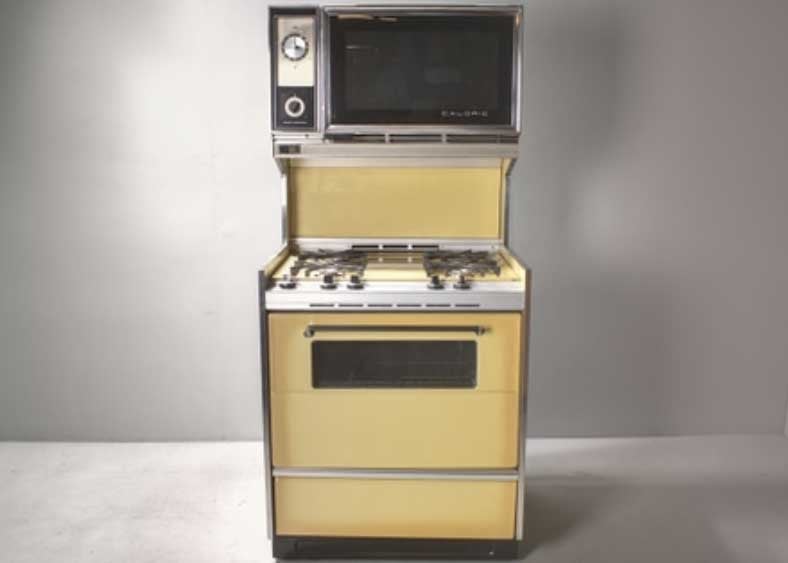
Then again, ventilation wasn’t as important due to the lower burner output.
Front-Burner Reality Check
Quick question: Which burner did you use when you cooked today?
I’d guess the front right or left burner.
Let’s see how that plays out on a popular range paired with a matching over-the-range microwave.
Have a look at the Café range and over-the-range microwave:
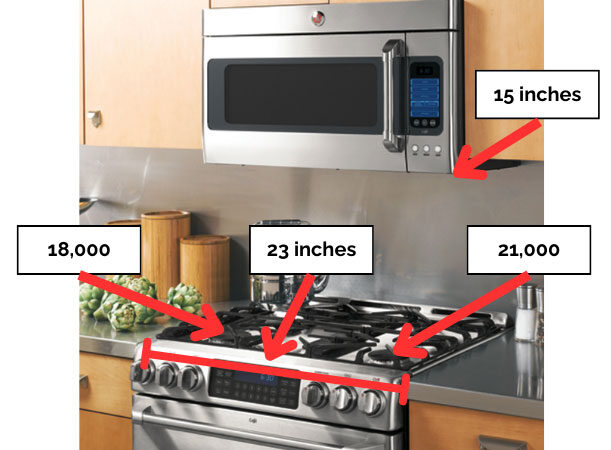
The average microwave is 15–16 inches deep, yet that front right burner is 23 inches deep.
So all that heat, grease, and other pollutants are not fully vented.
The front burner of every range is also designed for high output.
But what does that mean?
Let’s use bacon as an example to understand this concept.
When you cook bacon, you might think it’s just the wonderful baconey aroma (and a bit of unwanted grease).
However, you’re also releasing potentially harmful compounds when you cook on gas.
 Here’s a partial list:
Here’s a partial list:
- Nitrogen Oxide (NO)
- Nitrogen Dioxide (NO₂)
- Carbon Monoxide (CO)
- Formaldehyde (CH₂O or HCHO)
- Particulate matter (PM₂.₅)
💡Editor’s Tip: Choose induction when you can’t vent or have poor venting; induction doesn’t emit these harmful compounds.
Even though induction and electric cooktops emit some of these compounds, the levels are much lower.
Given these risks, you'd think people would take ventilation more seriously.
Then you see these...
Real-World Fails: Photos of Poor Venting in Action
This AGA professional range has eight burners, yet it has no vent at all.

Without a vent, the kitchen traps all that wonderful bacon aroma along with grease and less-than-wonderful compounds. That’s a truly bad idea.
Another bad idea is downdrafting high-powered burners, especially a grill.
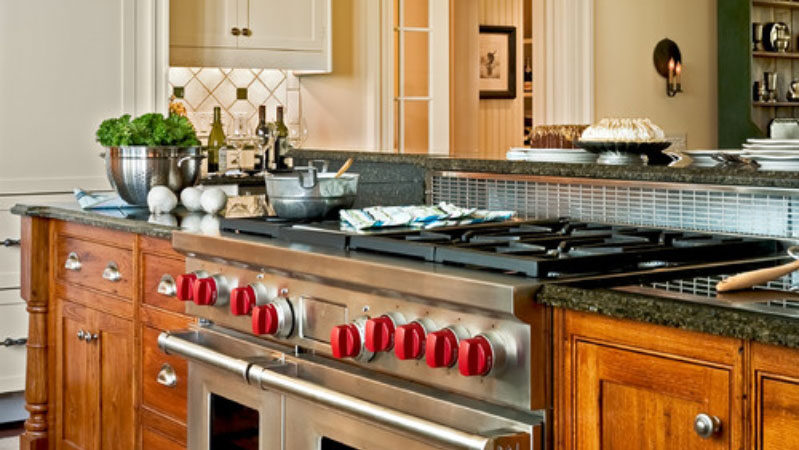
Do you grill outside? Do you think you can downdraft all that smoke?
You’ll learn why downdrafts aren’t effective later in the article.
In the next example below, the hood isn’t designed for a professional range. It lacks one key attribute common to all ineffective vents.
You’ll discover more about this further down in the article as well.
Even my mom’s range hood can’t handle the output of her Wolf dual-fuel pro range:
She didn’t consult me on this purchase.
Let’s look at this Café range. I love their line of appliances and its customizable colors and handles.
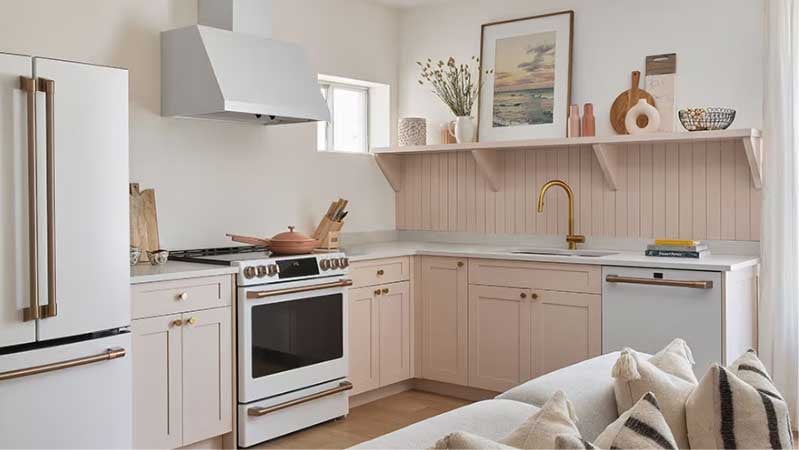
However, according to their specs, the top of the hood should be no more than 48 inches off the floor.
The hood is 18 inches tall, so its bottom should be 30 inches above the stove.
Does that look like 30 inches?
It’s 40 to 48 inches above the range.
When a hood is too high, some exhaust will remain in your home.
Venting 101: CFM, Capture Area, and Ducting Explained
Venting requires exhaust, commonly called CFM, capture area, an acceptable duct run, and size.
CFM
- CFM Explained: Stands for cubic feet per minute, indicating the volume of air evacuated from your house each minute.
- Typical Range: Range hoods typically operate between 350 to 1500 CFM.
- Visualization: A 1500 CFM exhaust can clear the air equivalent to a small room every minute.
- Understanding CFM: Higher CFM values mean more air is expelled, making it a straightforward measure of exhaust effectiveness.
Blowers

I know you, like most people, prefer the hood to be quiet.
Inline or outside should be much quieter, but you will still hear the air rushing through the vent with any of the three types.
Internal blowers are my favorite they're the simplest to fix.
The outside vent is a larger blower, which may not look the best versus a simple wall cap.
If you need repair, you will need an access point for the inline blower.
How Much CFM Do You Need?

When I was starting, we were taught venting required 1 CFM per 1000 BTU of output.
That's not smart thinking.
How you cook, not a simple BTU formula, determines the CFM you really need.
You need more for working, grilling, and griddling and less if you use your stove.
For grills, a minimum of 900 CFM or more is adequate. For 48-inch stoves, you should plan on 1200-1500 CFM.
Below are the prices of internal and external blowers
- Internal 600CFM blower (P6) $318.98
- Internal 800CFM (IQ6) $815.98
- Internal 1200 CFM (P12) $499.98
- External 600CFM (EB6) $715.98
- External 900 CFM (EB9) $850.98
- External 1200 CFM (EB12) $1152.98
When planning your kitchen, upgrading from a 600-CFM blower to a 1,200-CFM model doesn’t add much to the overall cost.
If you cook frequently or sometimes scorch your food, consider the larger blower.
Keep in mind that any ventilation system over 400 CFM requires make-up air for your occupancy permit. We’ll cover make-up air later.
Now, the factor most poor vents have in common:
Capture Area
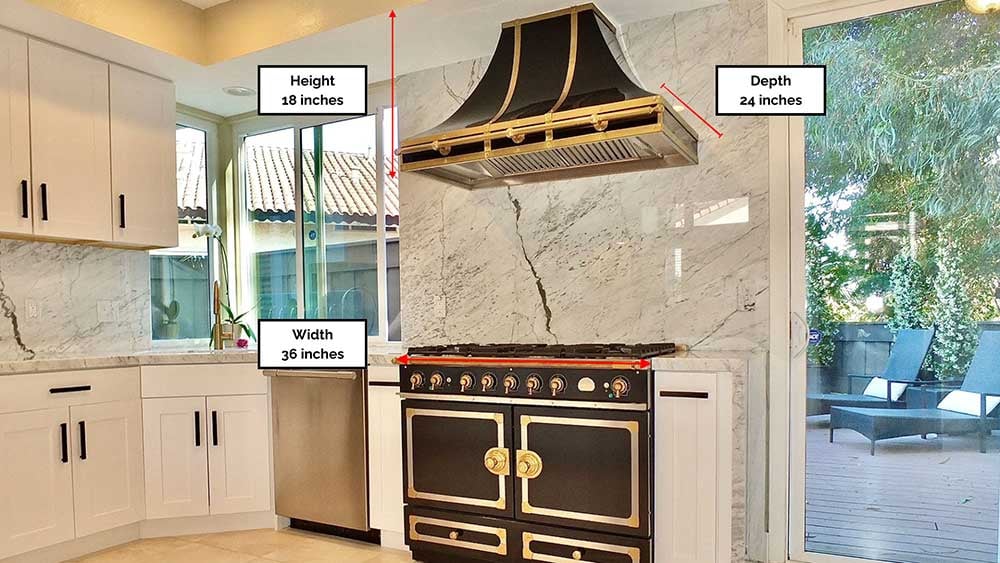
- Definition of Capture: Capture refers to the height, width, and depth of your range hood, which are crucial for its effectiveness.
- Location of High Outputs: Typically positioned at the front of the range, high outputs can cause smoke to escape past shallower hoods.
- Minimum Depth Recommendation: If you cook frequently, ensure your hood is at least 24 inches deep.
- Importance of Depth: Adequate depth is vital as it helps contain and exhaust smoke effectively.
Venting Direction
We have written the Yale blog for 17 years, and venting generates the most questions.
They usually begin, “Is it OK if I do X?” Unfortunately, the answer is almost always no.
Proper venting is simple. Use gravity. Run your duct up and straight out.

If your range is on an exterior wall, venting straight back is fine.
Venting downward or adding multiple elbows will not work because each elbow increases static pressure and slows airflow.
Duct Size
- Recommended duct size: Always use the rigid duct diameter specified for your range hood.
- Rigid piping: Choose rigid piping (required by code) to prevent grease buildup in flexible joints.
- Adherence to specifications: Follow the manufacturer’s guidelines, or consider a larger duct if you cook often.
I remember when people used dryer vent kits - just four-inch cloth hoses - to vent their stoves. It’s surprising more fires didn’t start.
Make-Up Air
Make-up air is required by Massachusetts law, and for good reason.
Imagine installing a 1,200-CFM vent.
It exhausts 1,200 cubic feet of air every minute, roughly the volume of a small room.
If no fresh air enters, the replacement air will come from your furnace, attic, garage, and basement.
That is not healthy air.
The simplest solution is to add a fresh-air return through your HVAC system.
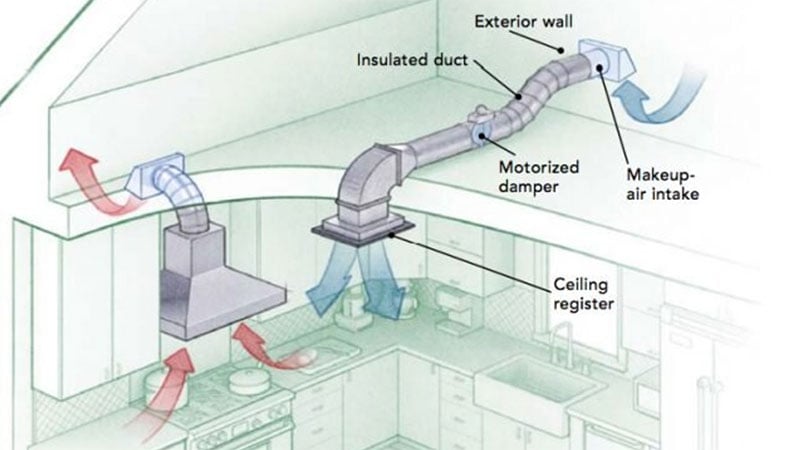
As shown in the diagram, place the intake at least ten feet from the range so you do not breathe stove exhaust.
How to Vent an Island
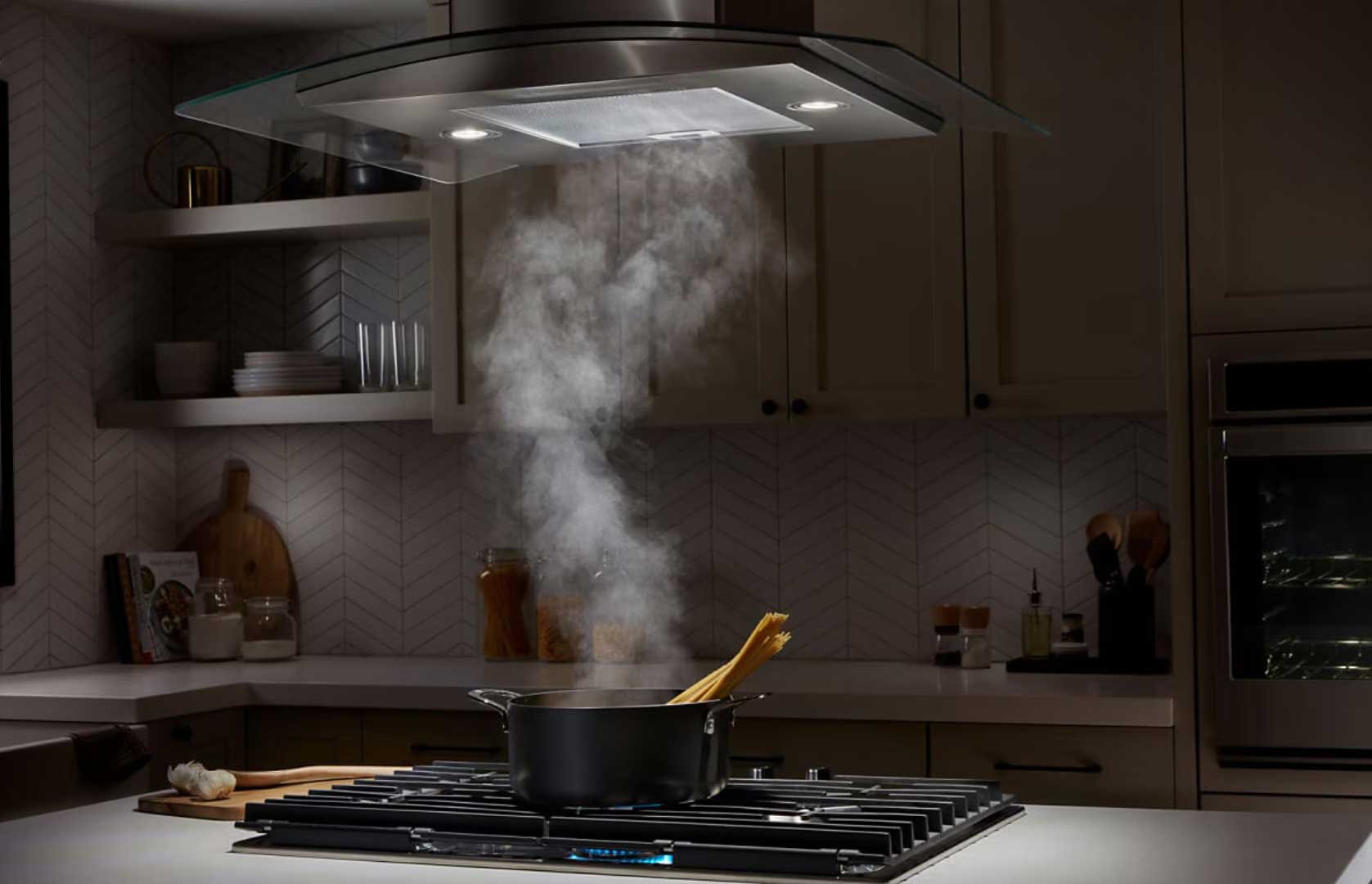
Venting an island range is similar to venting a wall-mounted unit.
Install the vent at the ceiling rather than the back.
Because there is no wall to capture smoke, choose a hood about three inches wider than the cooking surface on each side.
Venting Options to Avoid
Below are a few ventilation options to skip whenever possible:
- Downdrafts
- Slide-Out Hoods
- Over-the-Range Microwaves
- Wood Range Hoods
Sometimes you have no choice but to use one of these. If so, make sure it performs as well as possible.
Downdrafts

Downdrafts were popular in the 1980s because they let homeowners place the cooktop on an island and keep sightlines open.
Unfortunately, without a capture area and with a long duct run that often includes an elbow, they struggle to pull smoke and steam.
A sink in the middle of your island is a far better idea.
Over-the-Range Microwaves

I had an over-the-range microwave when I moved into an apartment last year. Steam regularly blew past it while I was making tea.
At roughly 15.5 inches deep, it cannot reach burners that sit 23 inches from the wall, so its venting power is limited.
Slide-Out Hoods
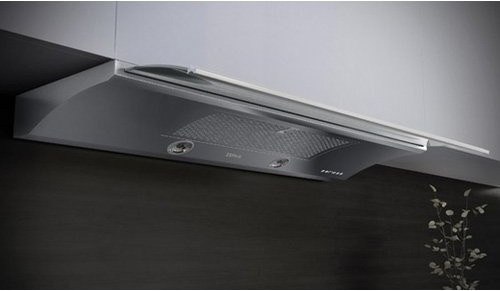
For the few designers and architects who still think a glass visor looks cool, it does not. A flat sheet of glass cannot vent properly and fails to cover the front burners.
Custom Hood Inserts

Wood or custom hoods add personality to a kitchen. You purchase a metal liner to hold the blower, then add the blower, filters, lights, and controls.
Imagine taking a Sawzall to a standard hood and cutting out the motor. That is essentially what you do with a wood or custom hood.
Many homeowners choose an underpowered blower, plan an inadequate capture area, or mount the hood too high.
Follow the same guidelines for CFM and capture you would use with any other hood.
Ceiling Blowers
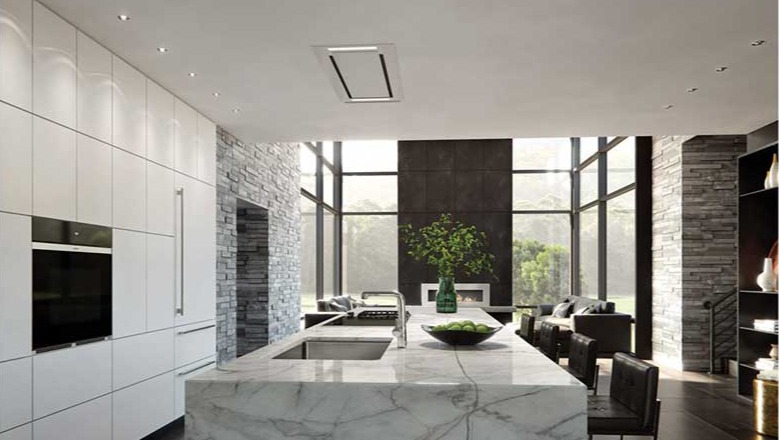
I am not convinced ceiling blowers work well; I still need to test them properly. In my old Cambridge apartment, the owner installed a bath fan over the range.
It moved some air, but grease accumulated around the front of the unit. Ceiling blowers are better than downdrafts, yet you must follow the installation specifications.
Do not mount them as high as the one shown in the picture.
Ventless Options
.jpg?width=1000&height=563&name=broan-ventless-hood-(1).jpg)
I am not a fan of ventless hoods. They filter odors but not gases, so performance is limited.
If you must go ventless, choose a triangular European-style hood. It directs air away from your face.
Quick Fixes When You Can’t Rip Out Your Current Vent
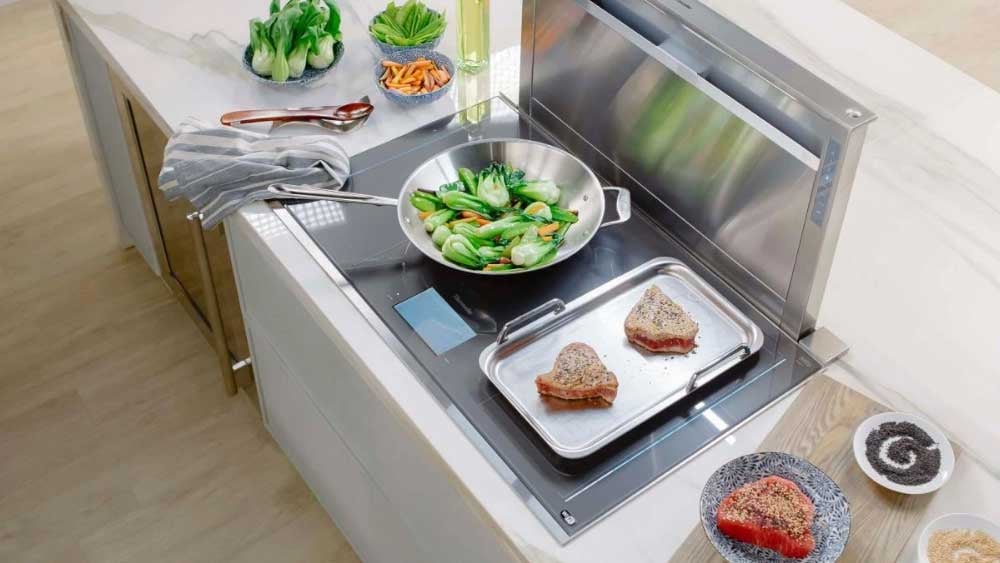
This article is not about spending $30,000 to replace an existing downdraft. That is seldom practical.
Instead, focus on everyday solutions:
- Turn on your vent. Many people own a decent unit but forget to use it.
- If your vent is poor, such as a downdraft or over-the-range microwave, switch to induction or electric to reduce emissions.
- Cook on the back burners whenever possible.
- Open your windows; a cracked window provides the fresh-air return you need.
- Use air cleaners. Combine HEPA with charcoal to capture particles and some gases; I use a Sharp Plasmacluster in my kitchen.
- Consider induction so you will not inhale harmful compounds.
Key Takeaways
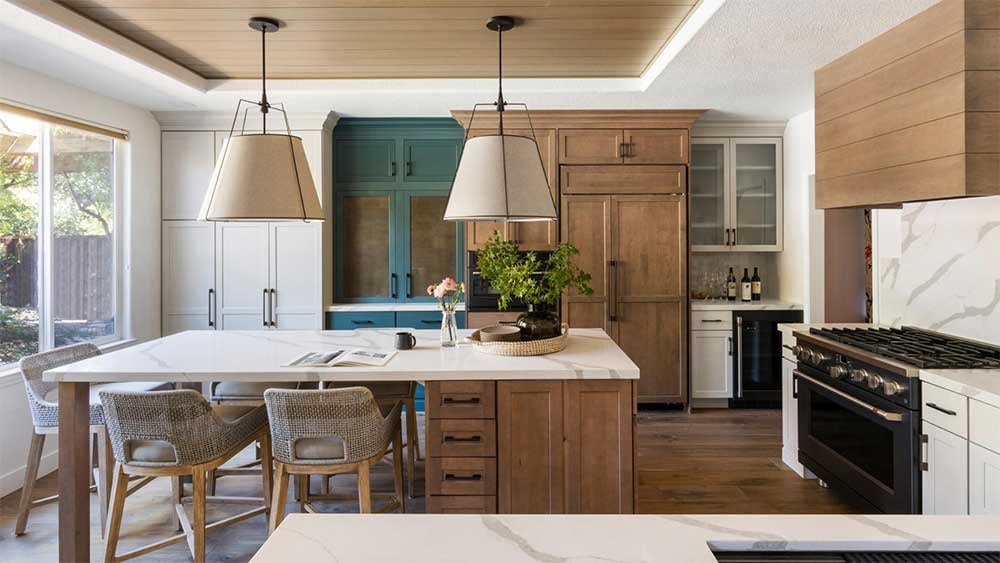
It's not that difficult.
Assess what you need for CFM. Buy a hood that covers the front burners you use and vent straight up and back.
In other words, avoid most of the vents sold in an appliance store.
Also, make-up air is the law in Massachusetts, so plan a fresh air return in your kitchen.
🔥 Plan the Right Vent for the Way You Cook
The best kitchen ventilation starts with a conversation.
Our expert advisors will help you choose the right hood, CFM, ducting, and make-up air setup—based on how (and what) you actually cook.
Appointments are available 7 days a week, and you can schedule them at your convenience.
Click here to book your showroom appointment.
Related Articles:


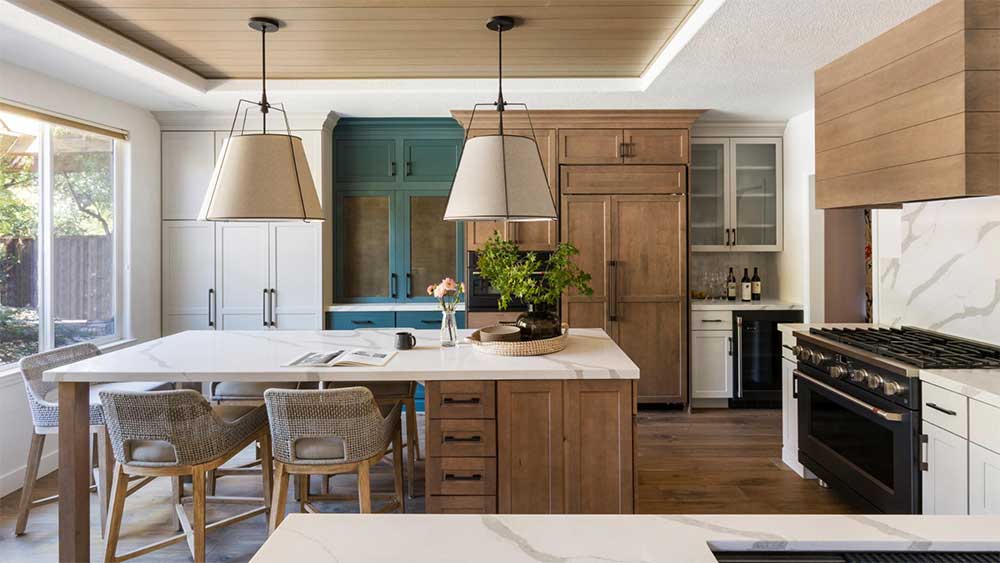






 Here’s a partial list:
Here’s a partial list:














.jpg?width=1000&height=563&name=broan-ventless-hood-(1).jpg)

